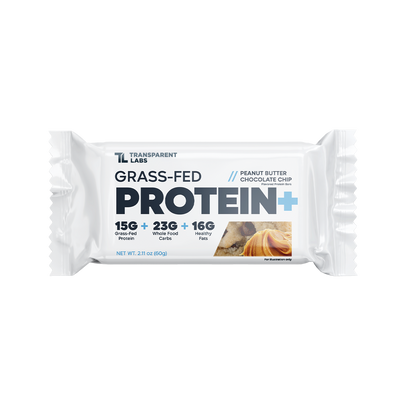How Much Protein Can Your Body Absorb in a Single Meal?

Gym-goers often assume that there is an innate limit on how much protein the body can absorb in one meal. Traditional bodybuilding dogma suggests that the limit is around 50 grams of protein. Yet, no empirical data substantiates such a notion [1].
It’s important to differentiate between “protein absorption” and “protein synthesis/utilization.” Digestive enzymes play a crucial role in breaking down protein into amino acids for absorption. When protein intake is excessively high, the fate of amino acids shifts accordingly (e.g. more amino acids are oxidized or converted to glucose/lipids instead of being used for protein synthesis) [2].
Since protein metabolism is influenced by numerous variables, particularly age, endocrine function, exercise, and energy status, it’s tough to quantify a point of inflection where excess protein intake stops contributing to muscle growth and starts feeding into other metabolic pathways [3].
Determining how much protein the body can absorb at once is further complicated by differences in gut microbial nitrogen metabolism and splanchnic extraction of amino acids from dietary protein [4, 5].
Nonetheless, this article will clarify some of the (mis)apprehensions surrounding the question “How much protein can your body absorb in one meal?” Grab a protein shake, and read on!
A Brief Primer on Protein Consumption
First, we'll briefly summarize how protein is digested and absorbed, and what happens thereafter.
Proteins are comprised of molecules called amino acids — organic, nitrogen-containing compounds that function as chemical messengers and intermediates in metabolic pathways. Amino acids link together via peptide bonds to form macromolecules like enzymes, cellular proteins, and peptide hormones (e.g., growth hormone and insulin).
When we consume protein, digestive enzymes in the gastrointestinal tract hydrolyze the peptide bonds and generate free-form amino acids along with smaller peptide fragments. The resulting molecules are then absorbed by the intestines and sent to the systemic circulation or used directly by splanchnic tissues. (“Splanchnic” refers to organs of the abdomen, notably the liver, spleen, pancreas, and gut.)

For skeletal muscle-building, amino acids need to reach the systemic circulation so peripheral tissues can use them to synthesize muscle proteins. As such, splanchnic extraction of protein decreases the capacity of amino acids to increase skeletal muscle protein synthesis and reduce protein breakdown [6].
Amino acids and peptides that are not absorbed in the small intestine are subject to gut microbial metabolism. The colon and large intestines are dense with anaerobic bacteria that ferment amino acids [7]. Since hydrogen sulfide — an odorous gas that smells like rotten eggs — is a potential end-product of amino acid fermentation, eating a large amount of protein at once can cause flatulence (read: "protein farts").
How Much Protein Can Your Body Absorb in One Sitting?
As mentioned above, there is no research or evidence that suggests the body can only absorb up to 50 grams of protein in one meal. The body can absorb an exceptionally large bolus of protein in one sitting — it just takes longer to assimilate it [8, 9].
Now you’re probably wondering, “Ok, but what if I eat 200 grams of protein in a meal? Will it all be absorbed?” To a degree, yes; but it also depends on what you mean by “absorb.”
To reiterate, protein absorption is distinct from protein utilization; when we consume protein in excess, even high-quality whey protein, it won’t lead to limitless muscle protein synthesis as some people believe. As the quantity of essential amino acids in a meal increases, the rate of amino acid oxidation increases proportionally [10].
When someone asks “How much protein can your body absorb at once?” they’re typically wondering how much of that protein intake will be used to build muscle tissue.
PROTEIN ABSORPTION DOES NOT EQUAL MUSCLE PROTEIN SYNTHESIS
Protein quality and quantity are known to impact the anabolic response to constituent amino acids, and this is partly due to discrepancies in splanchnic vs. peripheral utilization of dietary proteins [11]. Hence, determining how much protein your body can absorb in one meal is a somewhat misguided question to ask; the more pertinent consideration, particularly for active individuals, is how much protein can the body absorb and utilize for muscle building.
It was previously assumed that muscle protein synthesis reaches a "cap" or saturation point when 20-35 grams of complete protein, such as whey protein isolate or chicken breast, are consumed either alone or with a meal [12]. Therefore, further protein consumption in a meal beyond ~35 grams would not equate to more protein synthesis.
However, newer studies refute the notion of there being a “cap” to protein synthesis per meal [13, 14]; instead, these studies suggest that there is no upper limit to the duration and magnitude of muscle protein synthesis after protein ingestion, and such findings corroborate the non-significant differences in lean body mass between subjects who distribute their protein intake throughout the day and those who do not [15, 16]. We can readily see examples of this phenomenon in individuals who follow intermittent fasting and maintain muscular physiques.
Does Protein Distribution Matter for Building Muscle Mass?
Some researchers argue that the anabolic response to protein is virtually identical regardless of protein distribution. The “anabolic response” to dietary protein can be defined as the difference between protein synthesis and protein breakdown after consuming protein alone or a mixed meal including protein. When protein synthesis is greater than protein breakdown, there is a net positive protein balance and, therefore, a favorable milieu for muscle tissue hypertrophy.
Studies in recent years have concluded that a maximal anabolic response is achieved by ingesting of 20-35 g of a high-quality protein (e.g. whey protein powder, eggs, and chicken breast) every 4-6 hours throughout the day [17, 18]. This theory led to the popular concept that distributing protein intake evenly throughout the day is necessary to maximize muscle growth.

However, this concept stems entirely from measurements of muscle protein synthesis after consuming protein, thus ignoring potential anti-catabolic contributions to the anabolic response. It’s also noteworthy that tissues and organs other than skeletal muscle may play a role in the anabolic response [19]. A recent literature review contends that there is likely no practical limit to the acute anabolic response of a single meal/protein dose, and the most sensible way to maximize muscle growth is to simply consume a moderate amount of protein with breakfast, lunch, and dinner [20].
It seems that total protein intake is the main factor to build muscle, not necessarily how often we eat protein. Of course, the quality of protein matters as well; plant-based proteins that are lacking essential amino acids won’t elicit the same anabolic response as animal proteins and milk-based protein powders. Thankfully, there are complete plant proteins, like pea protein powder, that contain a good balance of essential amino acids.
What Happens to Excess Amino Acids After Eating a High-Protein Meal?
Surplus amino acids from excess protein intake can contribute to gluconeogenesis and de novo lipogenesis. Biochemically, the latter is not an efficient process, but it does occur [21]. For the most part, surfeit amino acids are oxidized for energy or sent to the liver for gluconeogenesis, depending on the body’s immediate demands.
Interestingly, the body appears to have a “buffering” mechanism that prevents acute surges in circulating levels of free amino acids. This is evidenced by the finding that as protein intake increases, the magnitude of diurnal protein recycling also increases [22]. If this weren’t the case, we could theoretically build unlimited amounts of muscle mass by eating as much protein as possible.
For reference, in a 70-kg (~154-lb) man, the amino acid pool of total body protein contains about 10 kg (~22 lbs) of amino acids, whereas the free pool consists of no more than 100 g of amino acids [23]. In other words, over 99% of the amino acids in the body are bound to protein. The remaining free amino acid pool is, in fact, commensurate with the quantity of amino acids consumed each day in Western diets.
How Much Protein Do You Need for Muscle Growth?
Even if muscle gain is your primary goal, eating tons of protein isn’t necessarily wise. While a high-protein diet will optimize the acute anabolic responses to resistance training, over consuming protein won’t contribute to greater muscle growth.
The key takeaway here is that excess protein intake isn't necessarily "better" for building muscle mass, nor should you stress too much about whether or not your protein intake is evenly distributed throughout the day. Most adult athletes and gym-goers only need 1.2 to 1.5 grams of protein per kilogram of body weight per day to build muscle efficiently and improve body composition. If you want help determining how much protein to eat, check out our handy Protein Calculator!









